Up to 50% Clearance Clothing & Footwear + Extra 25% Off REI Outlet.

For the three of you reading who have ever heard of Dresden: Good for you. You either know more about WWII history than most or you’re a Kurt Vonnegut fan. I was the latter. Nothing like a little “Slaughterhouse Five” to teach you a little something about history. But whether you knew the city existed or not, you should know it’s well worth a visit. It’s a balanced mix of history and culture, new and old, making it a lovely place to spend a few days. Or an afternoon, as we did.
First of all, a little history
We actually weren’t really “planning” on passing through Dresden. The thought had crossed my mind – I am a Vonnegut fan, after all – but I hadn’t yet located it on a map when we ran into a couple of German girls in Iceland with whom we hitchhiked for two days who casually mentioned it. When I asked them about the city they described a place of wonderment: a beautiful river, cafes by the water, historical buildings, rocking concerts… I was intrigued, not least of all because Vonnegut himself was a prisoner of war there in WWII and wrote about the firebombing in his fictional novel, “Slaughterhouse Five.”
Naturally, we had to go. There was no excuse when we discovered it was basically halfway between Berlin and Prague, which were scheduled back-to-back on our itinerary. So we took a bus from Berlin and arrived in Dresden in the morning, hit the sidewalk and started walking.
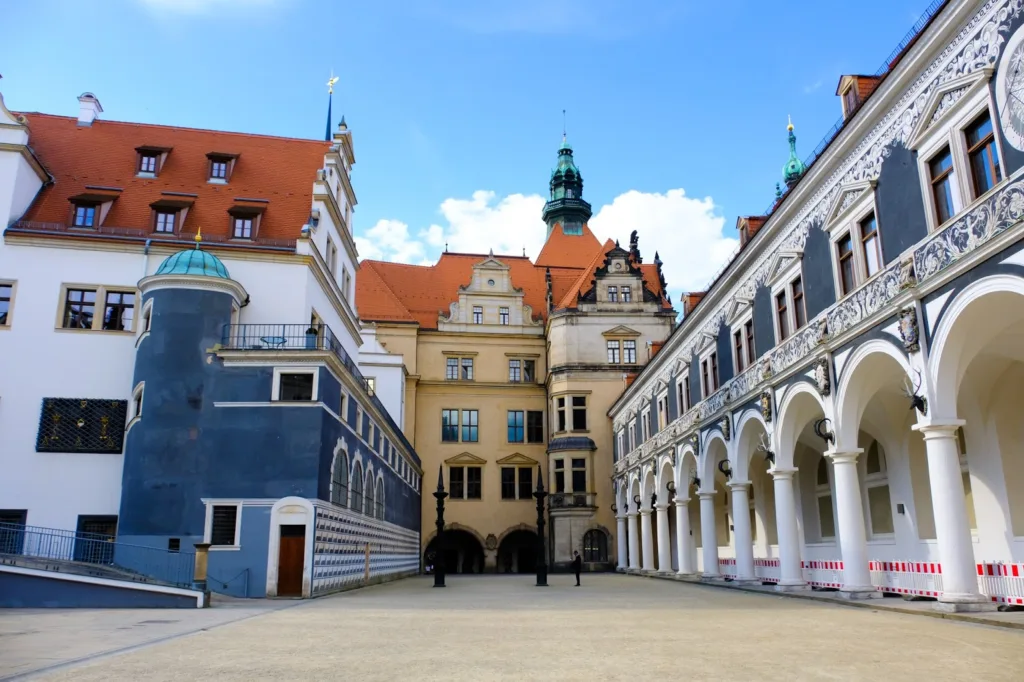
The city is more or less split in two by the Elbe River. One one side is the historic district, or rather, what was left of it after the city was wiped out in 1945. On the other is the more modern city center, peppered with cafes, shops, restaurants, vegan ice cream, anything you could hope for in a relatively small city in Germany. It was quite lovely, actually. It hit the oft-missed sweet-spot of modernity and small-town loveliness that I adore in a city. The main street was wide and lined with trees and park benches, a great place to drop our bags and dig into the sad lunch of bread and marinated tofu that we had pieced together from the grocery store. There were fountains and churches and marketplaces and it was just a nice place to find oneself.
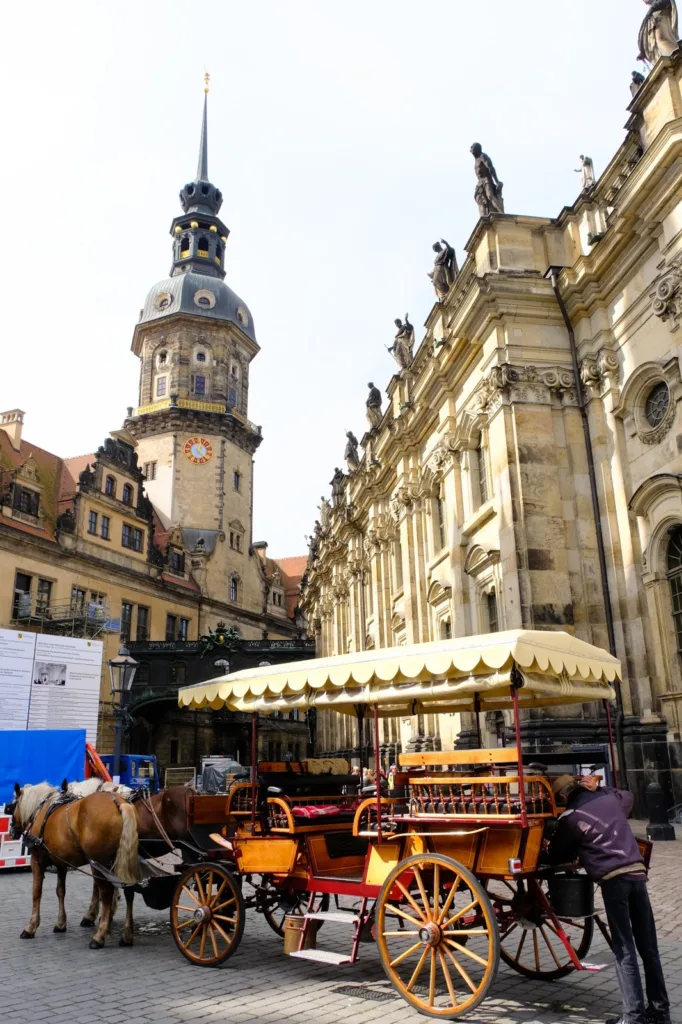
But we wanted to see architecture. History. So we waltzed across the river, peering down the way to see if we could spot the building where Vonnegut hid out during the firestorm (we couldn’t – it’s been turned into a convention center parking lot or some such), and promptly panicked as I ran out of data on my phone plan.
I say we, but what I mean is I panicked. Josh rarely panics. Which is good, because you hardly need two people threatening to throw cell phones across the cobbled street into a 600-year-old building. So instead of just starting to wander, we spent an hour locating free WiFi and squatting on the sidewalk next to a gift shop trying to get it to work again. It’s not easy when your European service provider’s website is all in French and Google won’t offer to translate it on your phone for some reason. By the time we did work it out we decided we needed coffee and sustenance before carrying on.
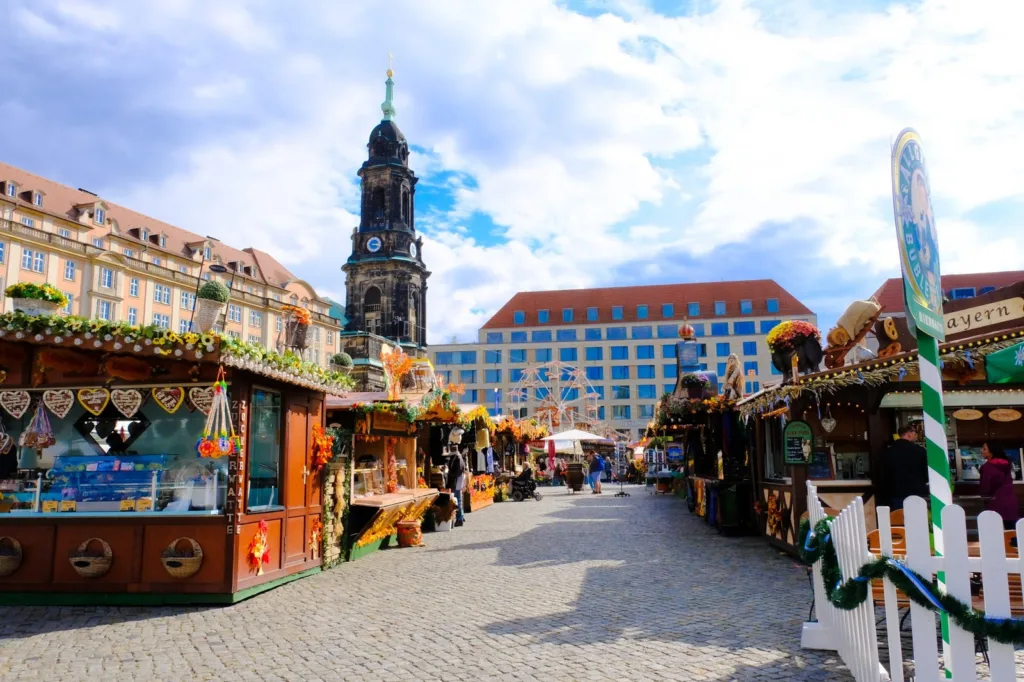
Fortunately, Aha Cafe was nearby and we dug into a bowl of tasty potato soup, complete with brown bread (we were in Germany, after all), and sucked down some coffee. I then proceeded to use the men’s restroom in the basement because I somehow missed the sign for the women’s toilet on the main floor. Lucky for me, as I didn’t realize what I had done until I came back upstairs, no one else decided to use the bathroom at the same time. Not that I would have been bothered at this point in our two-month European jaunt; by then we had already been using co-ed hostel bathrooms for weeks.
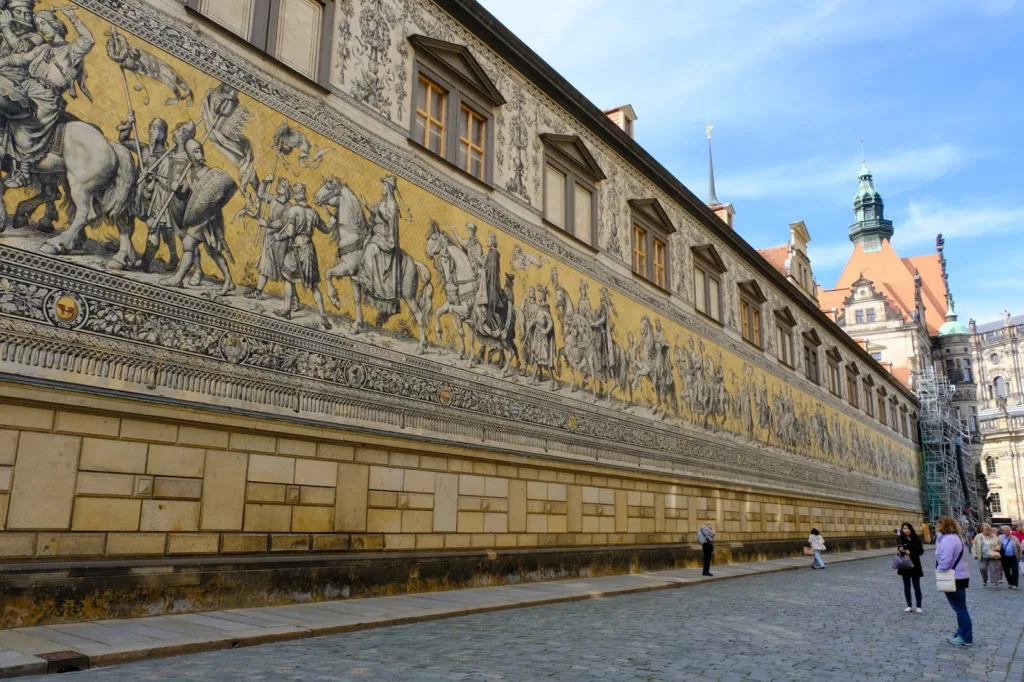
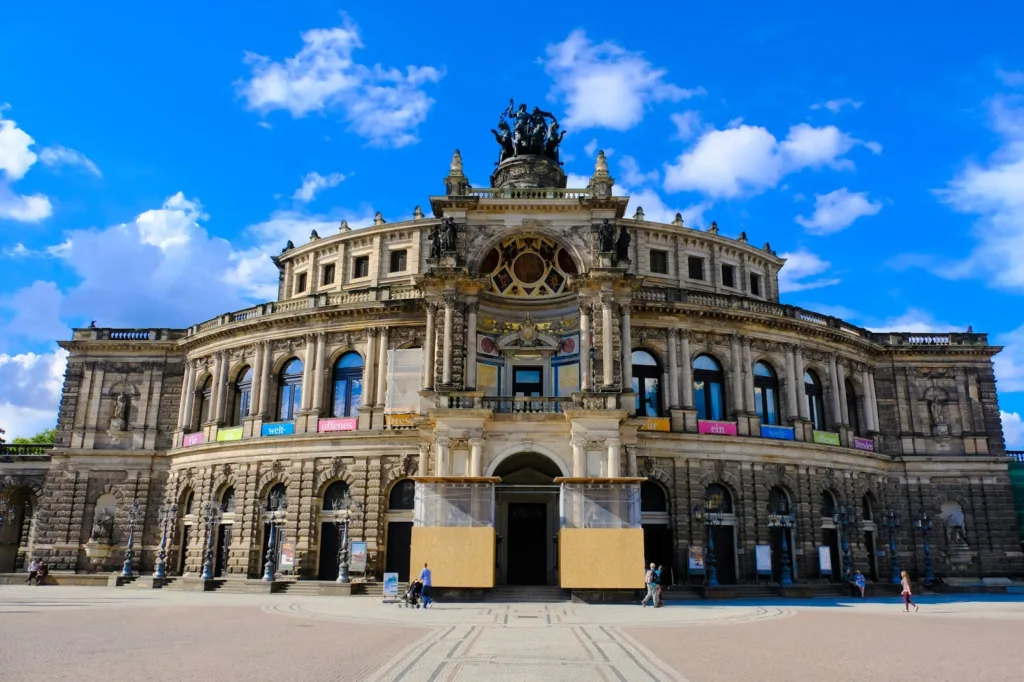
Then we got on to the historical stuff. And man, let me tell you that what didn’t get destroyed during wartime is singularly impressive. Striking churches, towering monuments, and one former palace grounds called Zwinger. It may cost a fee for entry into the museum, but it’s free to wander the open garden in the center of the square complex. You can even hike up some stairs from the outside and treat yourself to a view from above. To say it’s an impressive piece of architectural craftsmanship is being modest.

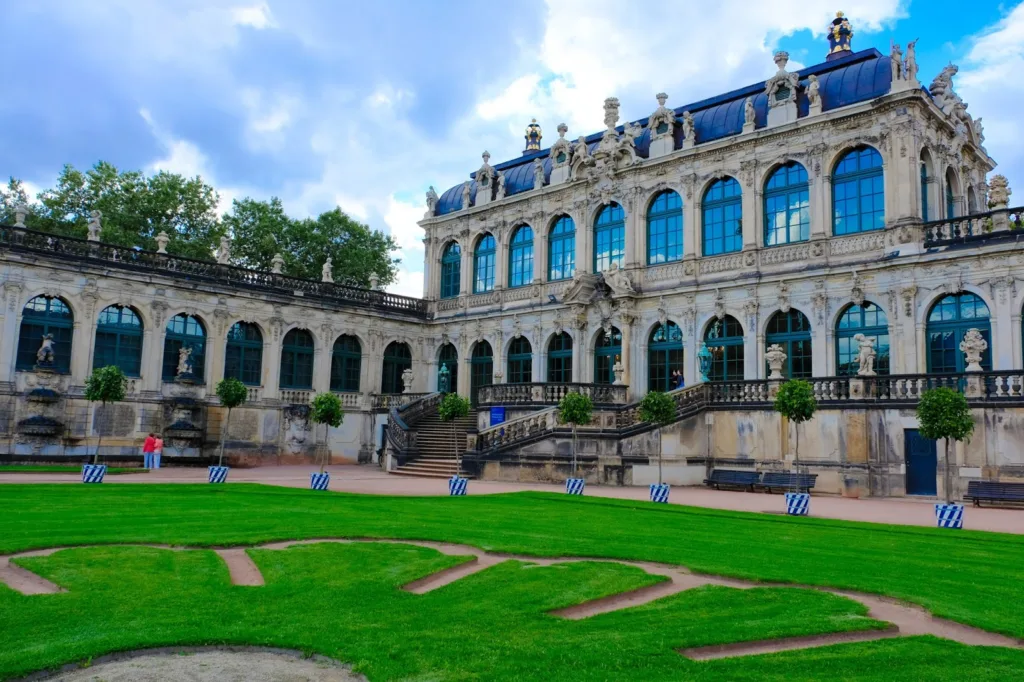
Many of the baroque churches, like Frauenkirche, charge to go in and up into towers with sweeping views of the city, but it’s free to admire them from the street! The Theaterplatz and Katholische Hofkirche were equally mesmerizing. Basically, we just walked up and down winding streets all afternoon examining ages-old buildings and art. There was a surprise around every corner.
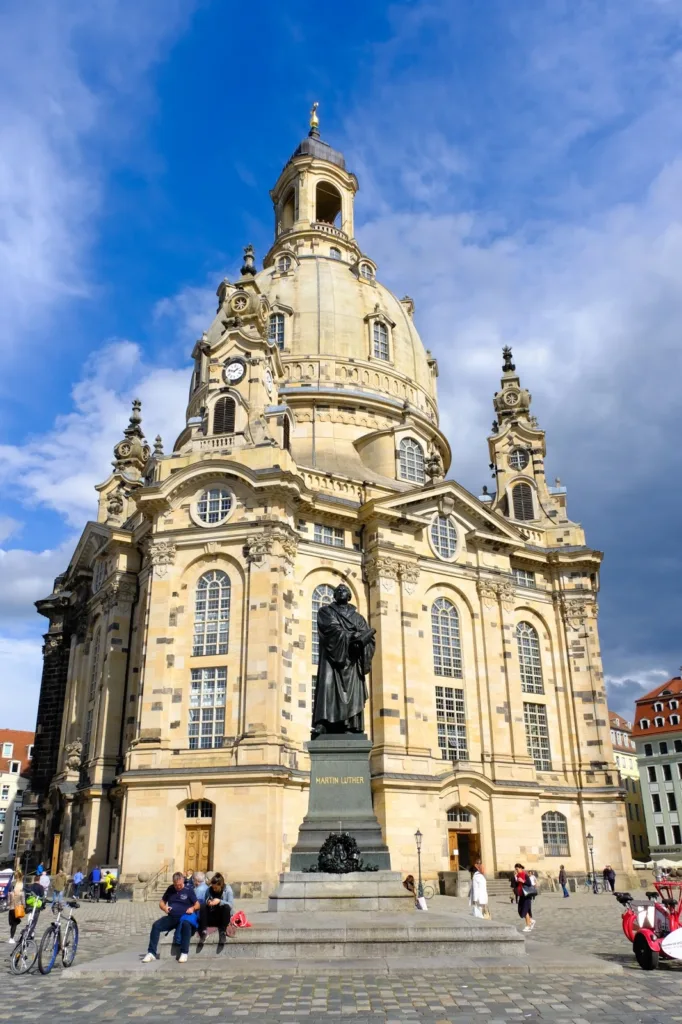
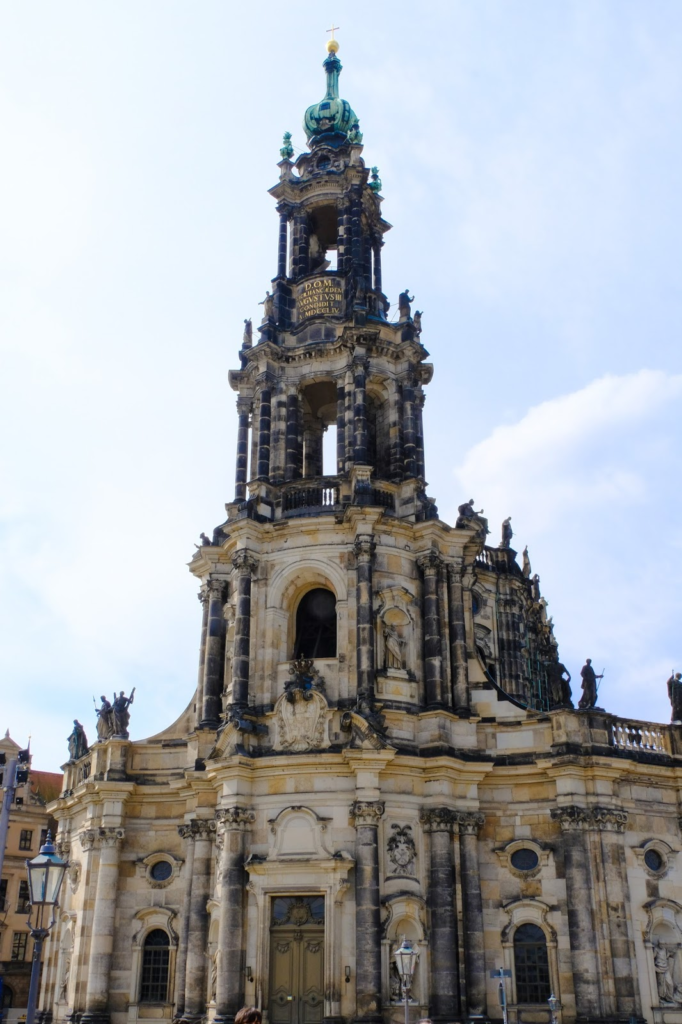
But because most of the city was destroyed, the only historical part left is quite small in comparison to the city as a whole. So in no time, we found ourselves back into modern streetscapes again and a street market that had been transformed into a mini festival for the weekend. Tiny Ferris wheel and all.
Basically, Dresden is a daydream of a town. In fact, it was the first European city we had visited that met my odd and often contradictory standards for a place I could possibly see myself living. Except for the weather. It gets too dang cold in Germany. Long story short, it’s a great place to spend a weekend wandering streets, looking at art, and maybe going on a treasure hunt for Vonnegut’s slaughterhouse.
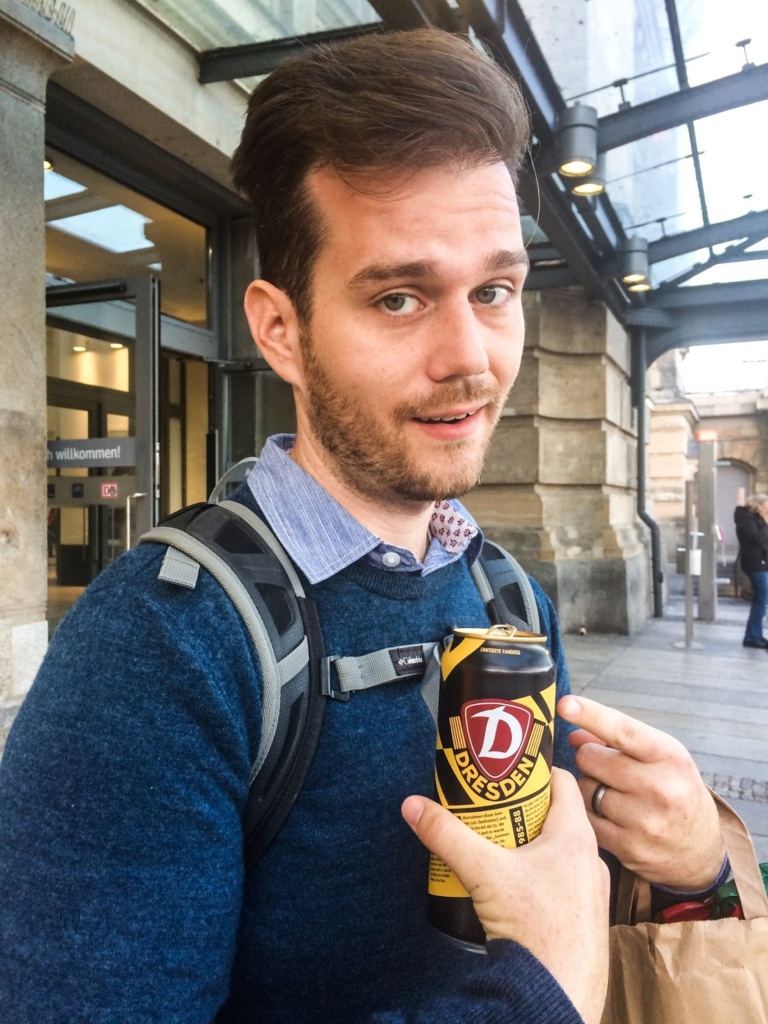
Fun Facts about Dresden, Germany
- Toothpaste and coffee filters were invented in Dresden
- The number of deaths reported after the firebombing in 1945 range from 18,000 to 200,000
- Pre-WWII Dresden was considered one of the most beautiful cities in the world
- After the war, many of the old buildings were reconstructed from what was left of them and a new city was built around it
- There is an international airport and several rail and bus stations making traveling to Dresden easy (It costs between 10-12 to get there from Berlin or Prague and only takes a few hours by bus or ride-share)
- The slaughterhouse where Vonnegut hid out during the firebombing is now a convention center. The basement where he was has been renovated but contains a memorial wall in his honor. Find it here.
Alisha is a freelance outdoor journalist and photographer based in Ogden, UT. She loves backpacking, hiking, mountain biking, kayaking and snowboarding (even though she’s terrible at it). She’s also pretty sure she’s addicted to coffee. alishamcdarris.com
